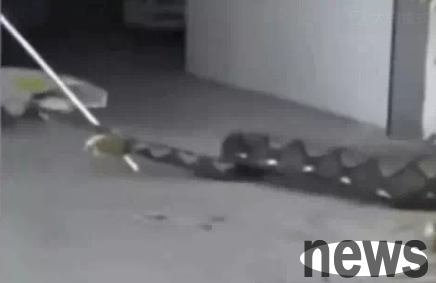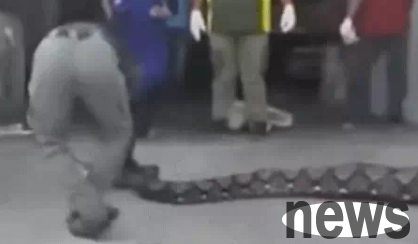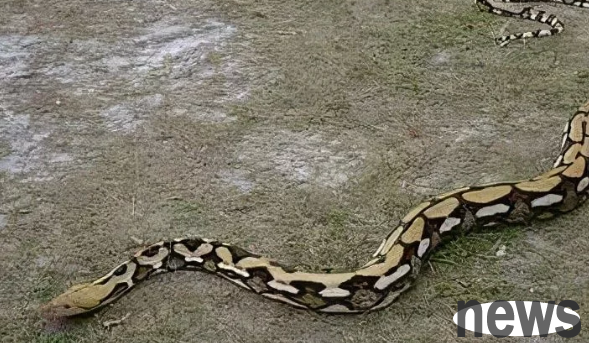In the hot season, snakes are more active. In order to catch food, many snakes will break into human residences and capture poultry and livestock for food. Recently, in a factory in Thailand, someone found a large python hiding in a gap in the factory wall. It stared at the onlookers, but did not dare to climb out easily. In order to prevent the python from hurting people, professional rescuers were quickly notified.

After the rescuers arrived, they found that it was difficult to capture the big python. On the one hand, the python was huge and powerful, and on the other hand, the python was hidden in the cracks in the wall, which was conducive to the movement of the python but not conducive to the movement of people. In the end, they decided to use snake traps and other professional snake-catching tools to clamp the python's head. With the cooperation of many people, it was still very difficult to pull the big python out of the gap in the wall.


After measurement: this python is more than 6 meters long. It is a wild python. The most obvious thing is that the belly of this python is bulging and expanded greatly. It has just swallowed its prey. And a dog in the factory disappeared, so everyone in the factory suspected that the big python was too hungry and broke into the factory and swallowed a dog. Finally, the python will be taken to a remote jungle and released back into the wild.

In the python species, there are many natural enemies of pythons, but when the python is more than 5 meters long, so the python has a strong strangulation ability, few animals will actively hunt the python. This 6-meter-long python, judging from its appearance, belongs to the reticulated python species among pythons. The reticulated python is considered the longest snake in the world. Reticulated pythons are generally more than 6 meters long, and wild reticulated pythons of 8-9 meters are also relatively common.


The population of reticulated pythons is mainly distributed in the tropical rain forests of Southeast Asian countries. In the food chain, wild reticulated pythons mainly feed on deer, sheep, wild boars, and reptiles. When the reticulated python is still a small snake, it hunts a lot of prey, such as eagles and other raptors, king cobras, cats, etc. As an adult, the reticulated python's natural enemies are fewer predators besides humans, mainly including crocodiles and other predators.

Wild reticulated pythons are large, rough-tempered and highly aggressive. However, due to their slender body and other appearance, reticulated pythons are also popular in the reptile market. Some snake enthusiasts will keep reticulated pythons as pets. Artificially bred reticulated pythons have a docile personality and are not as ferocious as wild reticulated pythons. However, reticulated pythons are, after all, cold-blooded large reptiles. During the breeding process, you should pay attention to the changes of reticulated pythons to avoid being attacked and bitten by pythons.
